Multi-cloud environments become necessary as small and medium businesses expand and require more cloud services to maintain production and service clients. As more cloud services are added to the company’s network, gaps in cybersecurity can arise, and hackers are keen to take advantage of these gaps to cause data breaches, initiate DDoS attacks, deploy malware, or perform a variety of other attacks. Closing these security gaps should be a high priority for businesses, and with the right cybersecurity policies and the help of a reliable small business IT consultant, SMBs can improve their multi-cloud environment’s security and resiliency to cyberattacks.
Security Tools and Plans

The first step to improving the security posture of a multi-cloud business is to deploy security solutions that provide the best layers of protection for the environment. Firewalls, network detection and response (NDR) tools, endpoint protection, and multifactor authentication (MFA) are prime examples of reliable security solutions that can protect a cloud network. It is important to ensure these cloud-based security tools work across your cloud environments and can be managed efficiently by your IT team or consultant. Recovery plans should also be made for worst-case scenarios that could cause damage to business operations. This way, if a threat does make it past security measures, employees can quickly take the steps necessary to get the business back up and running.
Verify Connections and Controls

Once the network has the right security tools in place, every connection made to the company’s network should be verified as secure and have adequate encryption algorithms in use. This means that on-site connections should be made with IT-approved devices and with the required security solutions active and configured correctly. Remote connections should use strong VPN’s and only attempt to access the network from secure internet connections that cannot be accessed by the public. It is recommended that each user account also has MFA to verify logins and that user privileges are in line with the principle of least privilege to reduce the threat surface of each endpoint.
Threat Assessments

After appropriate security tools have been implemented and accounts can connect securely, small and medium businesses should establish the necessity of regularly revisiting the network’s security and disaster plans. Old VPN tunnels can become unnecessary, user account privileges can not be adjusted appropriately, and other security gaps can form as time goes on. An IT consultant can provide detailed threat assessments for the company’s network that will both identify problem areas and recommend remediation strategies that minimize interruptions to business operations. By having regular network assessments, SMBs can help ensure their multi-cloud environment remains secure.
Summary
Multi-cloud environments are becoming increasingly common for businesses to operate in, but security habits don’t always keep pace with the implementation of additional cloud services. Even if security measures are offered by a cloud provider, endpoint security and connections across cloud services can present security gaps for hackers to exploit. Small and medium-sized businesses can greatly improve their multi-cloud environment’s ability to defend against cyberattacks by taking advantage of security tools that are tailored to their environment, secure connection methods, account privilege management, and regular threat assessments! For businesses that need to better secure their multi-cloud environments, Robinett Consulting offers a complimentary consultation with our security experts to see how we can help defend your business starting today!



